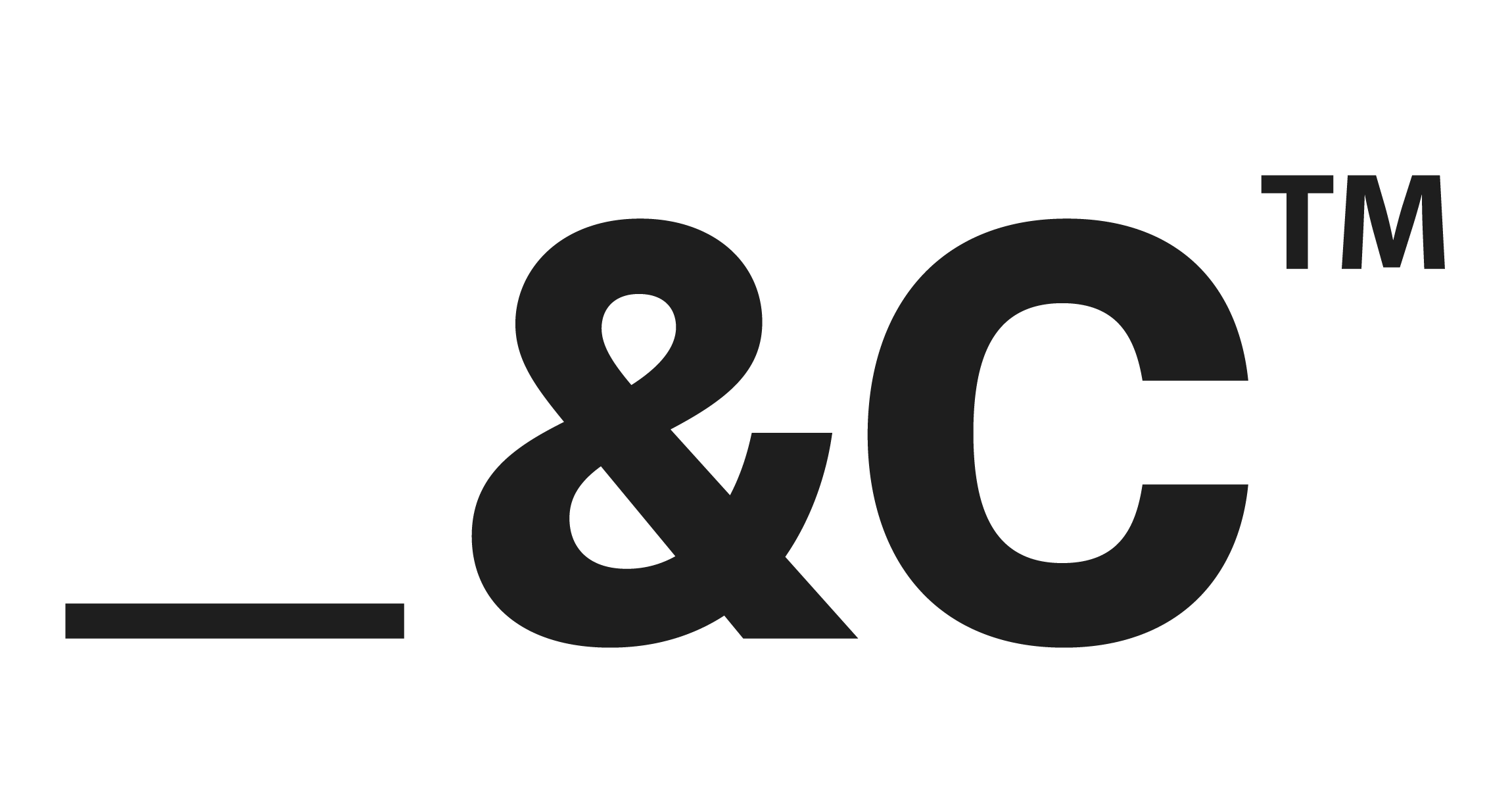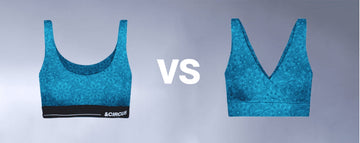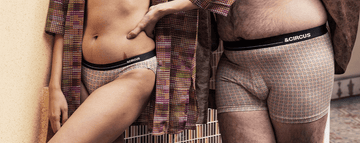Quick Listen:
In the sweltering August evenings of Mumbai, where the salty Arabian Sea breeze struggles against the electric hum of fashion week throngs, a plus-size model commands the runway in a kaftan that drapes her form with unyielding grace. Designers, tastemakers, and curious locals rise in ovation a defiant roar against an industry etched in lithe lines. Yet, as spotlights yield to after-hours murmurs, a sobering reality persists: India's fashion renaissance, alive with promise, treats size inclusivity as an alluring mirage, glimpsed but rarely grasped. From the grand stages of Lakmé Fashion Week to intimate gatherings in Chennai, these spectacles signal transformation, but they resonate with worldwide tensions where diverse forms clash against rigid beauty edicts.
Uncomfortable underwear shouldn't steal your confidence. At Andcircus, we craft ultra-soft, sustainable Lenzing Modal Micro® innerwear for every body, XS to 5XL. From briefs to bras, our custom packs fit you perfectly. Shop risk-free with our 100% satisfaction guarantee and embrace comfort that includes everyone. #LoveEveryBody. Shop Now!
Framing the Shift: Body Diversity Claims the Limelight in India's Fashion Arenas
India's sartorial tapestry woven from resplendent saris, ornate lehengas, and emerging lingerie collections that challenge monolithic standards pulses with quiet upheaval. During Lakmé Fashion Week in Maharashtra's teeming Mumbai, visionaries paraded ensembles attuned to body positivity: envision adjustable bras crafted from airy cotton to combat the subcontinent's relentless humidity, or maternity intimates that honor rather than obscure the body's evolutions. This evolution springs from a millennial and Gen Z chorus clamoring for mirrors in media, echoing a planetary pivot toward acceptance yet indelibly shaped by India's mosaic of physiques, forged by heritage, nourishment, and the grind of existence.
Venturing southward across the rugged Deccan Plateau, Bangalore's Karnataka fashion conclave has solidified as a forge of ingenuity. Tech-forward ventures fuse artificial intelligence for bespoke patterning with ancestral block-print techniques, yielding undergarments scaled to size 24 leagues beyond the erstwhile size-8 tyranny. Public fervor fuels this fire; campaigns under #BodyPositiveBharat amass viewership in the tens of millions, compelling marques to adapt or fade. Tamil Nadu's Chennai and Coimbatore host understated salon-style exhibitions, foregrounding neutral-body wardrobes: intimates in terracotta hues that favor ease over encumbrance. Delhi's cutthroat forums and Hyderabad's nascent ateliers, too, weave inclusivity into discourse, convening forums on democratizing delicates for those beyond cosmopolitan confines.
Still, the international lens sharpens the critique. As detailed in Vogue Business's spring-summer 2025 analysis, the panorama darkens: among 8,763 ensembles from 208 spectacles, a scant 0.8 percent spotlighted plus-size figures (US 14+), mid-sizes (US 6-12) claimed 4.3 percent, while straight-sizes (US 0-4) lorded over 94.9 percent. This stasis, mirroring the prior cycle, signals a societal recoil to emaciation, turbocharged by semaglutide injectables like Ozempic that pare down public figures. In India, where affirming corporeal truths tangles with entrenched reticence on form, the imperative intensifies, demanding not mere nods but seismic recalibrations.
This global stagnation isn't abstract; it infiltrates local rhythms. Fashion weeks here, while pioneering in pockets, contend with the same gravitational pull toward uniformity. Yet, the subcontinent's unparalleled ethnic and somatic spectrum spanning lithe northern frames to voluptuous southern contours positions it uniquely to pioneer. Early adopters, from Mumbai's indie ateliers to Kerala's verdant cooperatives, are testing waters with extended-range prototypes, but scale remains elusive. The ripple effects touch consumers daily: women in bustling bazaars or remote hamlets, sifting through racks that mock their measurements, yearning for garments that affirm rather than alienate.
Runway Radiance: Instances Where Inclusivity Ignited the Stage
Consider Mumbai's Lakmé Fashion Week anew, where the "All Sizes Matter" banner rallied indigenous lingerie houses into prominence. A pivotal lineup showcased plus-size ambassadors in fluid shapewear that synced with motion, eliciting fervor from novices hailing from Pune's outskirts. Beyond spectacle, metrics affirm impact: immediate post-event commerce for these wares surged, illustrating how exposure begets endurance in a profit-driven domain.
In Bangalore's verdant environs, alliances between nascent enterprises and pedagogical powerhouses like the National Institute of Fashion Technology (NIFT) have spawned resilient intimates. Picture underwire alternatives with modular gussets for nursing phases, or boy shorts in vapor-permeable weaves tailored to Karnataka's deluge-prone climes. Far from novelty, these address visceral voids; conveners whisper of a 20 percent leap in heterogeneous lineups year-over-year, gleaned from insider dispatches that hint at burgeoning buy-in.
Chennai's sequestered soirees, ensconced in breezy colonial edifices gazing upon the Bay of Bengal, embrace ecology with linen-derived delicates for equatorial endurance. Artisans, steeped in Tamil Nadu's storied loom legacy, amplify gauges to encompass ample silhouettes sans sacrificing the featherlight essence vital for routine repose. Kerala's Kochi counters with verdant vignettes, touting verdant, affirmative arrays organic filigree bottoms that laud dermal narratives as badges, not blemishes. Delhi and Hyderabad, in tandem, escalate via #RealBodyRunway surges, where grassroots uploads cascade across platforms, transmuting spectators into stalwarts.
Such vignettes coalesce into trends. The Fashion Design Council of India (FDCI) chronicles ascendance in ramp presences exceeding size 12, dovetailing with provincial fabric authoritie's advocacy for equitable fabrication. Nonetheless, autumn-winter 2025 insights from Vogue Business expose ironies: voluptuous motifs like ballooned haunches at Marine Serre or nipped torsos at Givenchy paired with a plunge to 0.3 percent plus-size amid 8,703 total looks, mid-sizes at 2 percent, and straight-sizes at 97.7 percent. India's locales advance incrementally, yet inherit these specters, underscoring the chasm between aesthetic homage and authentic embodiment.
These triumphs, though, illuminate pathways. In Uttar Pradesh's heartland or Gujarat's coastal folds, nascent collectives experiment with vernacular motifs intricate Ajrakh prints on stretch-resilient bases fostering dialogues that once seemed taboo. The alchemy of visibility and viability is at work, as evidenced by ancillary metrics: attendee surveys from Delhi weeks reveal 65 percent heightened intent to patronize inclusive labels, a testament to narrative's potency in reshaping commerce.
Barriers Erected: The Persistent Barriers to Genuine Inclusion
Beneath the sheen, fissures widen. Calibration chaos reigns supreme absent pan-national benchmarks, a Maharashtra "plus" may strangle in Tamil Nadu, spawning disillusion and discard heaps. Societal shyness amplifies: in Uttar Pradesh's bastions, Haryana's breadbaskets, or Gujarat's guilds, broaching brassiere breadth invites censure, muting advocacy.
Financial fangs sink deep. Sculpting for spectrum-spanning somas demands iterative molds, niche textiles, and logistical overhauls burdens that beleaguer Bengal's boutique creators or Telangana's township tinkerers. Distribution disparities deepen the divide: extended or expectant intimates flourish in Mumbai's malls or Delhi's depots but evaporate in Bengal's backwaters or Telangana's trails, consigning denizens to mismatched mail-orders or voids. The Textile Committee of India's 2023 dispatches delineate these snags, from raw material relays to artisan aptitudes ill-suited for amplified architectures.
Worldwide resonances reverberate. Research in the Journal of the Academy of Marketing Science delineates the "Dissimilarity-Risk Deterrence Effect": svelte spokesmodels repel fuller-framed buyers via inferred mismatch and amplified apprehension over adaptation, eroding e-commerce resolve countered, however, by size-synchronized surrogates that alleviate qualms, uplifting acquisitions across apparel spectra, save where form factors least. In India's e-tail explosion, this manifests as eroded allegiance in undergarments, a multibillion niche ripe yet ragged.
These impediments entwine with subtler strands. Supply chains, skewed toward slender defaults, inflate premiums for plus provisions often 20-30 percent hikes that deter distributors in cost-conscious circuits like Odisha or Madhya Pradesh. Moreover, archival biases in design academies perpetuate cycles, with curricula lagging lived diversities, as flagged in NIFT's internal audits.
Horizons Unfolding: Capitalizing on Evolving Dynamics
Optimism glimmers in secondary settlements Pune's pulsing veins, Coimbatore's loom labyrinths, Surat's silk sanctums where cravings for equitable erotica swell among laboring ladies navigating steamy sojourns and hearth holds. Digital bazaars helmed by Delhi dynamos and Bangalore brainiacs span schisms, proffering augmented auditions that unravel riddles for far-flung faithful. Prudent positioning: FDCI and Invest India's 2024 dossiers crown inclusivity as commerce's clarion, with verdant, vitalist vogues harvesting ardent adherence and algorithmic acclaim.
Communal cords bind breakthroughs. Non-profits entwining with NIFT outposts in Delhi and Chennai orchestrate ideation incubators, where novices forge from fleshly feedback envision ateliers abuzz with ample aides refining harnesses to hip highs. Marques merging ecology, à la Kerala's cane-infused canons, transcend transactions to galvanize guilds. The worldwide plus-size and big & tall apparel arena, pegged at $134 billion in 2023 and charting $179 billion by 2032 via 3.4 percent compound growth as per DataIntelo projections affirms the arithmetic: affirmation yields affluence. American retailer Old Navy's 2021 BODEQUALITY debut, for one, harnessed this helix, reaping reciprocity.
Hyderabad's horizon hubs harness hyperlinked hype with regional rousing figures, converting murmurs to mandates that nudge patriarchs toward pluralism. Laborious, labyrinthine labor, yet a Bangalore couturier's post-podium pearl endures: "Perfection eludes, but procession unites." Expanding this ethos, initiatives like Tamil Nadu's Textile Revival Fund seed grants for size-spectrum scaling, while Andhra's artisan academies infuse curricula with corporeal case studies, nurturing a cadre primed for parity.
Technological tides turn tables too. AI avatars in virtual fittings, piloted by Mumbai majors, slash return rates by 15 percent for diverse demographics, per beta briefs. Coupled with blockchain-traced sustainability ensuring ethical elastics these innovations not only entice but endure, forging fidelities that outlast fads.
Summons to the Stride: India's Imperative to Illuminate
With curtains closing on yet another cycle, India's fashion forums teeter on thresholds lauding lunges in Mumbai's vigor and Chennai's subtlety, yet grappling with gulfs that bench boundless builds. Savants from NIFT Delhi and FDCI vanguardists advocate a triad: state-sponsored "Made in India" metric mandates, layperson labs on proportionality, and marques mandated to manifest via candid cadre counts.
The surge sustains, propelled by a polity whose pluralism from Kerala's littoral lushness to Rajasthan's arid audacity exacts exhaustive inclusion. Amid Ozempic's sculpting of stars and catwalk's contraction of canons, India harbors heresy: not mere mimicry, but mastery in mercantilism of the manifold. That Mumbai march? The lure. Time to thread the globe in its train.
Frequently Asked Questions
What is the current state of size inclusivity in India's fashion weeks?
India's fashion weeks, particularly Lakmé Fashion Week in Mumbai and events in Bangalore and Chennai, are making incremental progress with body-positive showcases and extended size ranges up to size 24. However, these advances remain limited in scale, with the industry still grappling with sizing standardization issues, limited distribution beyond major cities, and financial barriers for smaller designers. While initiatives like the "All Sizes Matter" campaign have shown commercial success with post-event sales surges, genuine inclusivity remains more aspirational than actualized across the broader Indian fashion landscape.
How do global fashion weeks compare to India in plus-size representation on runways?
Global fashion weeks show alarming stagnation in size diversity, with Vogue Business's 2025 reports revealing that plus-size models (US 14+) represented only 0.8% of looks in spring-summer shows and dropped to 0.3% in autumn-winter collections, while straight sizes (US 0-4) dominated at 95-98% of all runway appearances. India's fashion events are mirroring these trends while simultaneously attempting localized inclusivity efforts, creating a paradox where aesthetic tributes to curves appear alongside minimal actual representation. This global pattern affects India's fashion industry as it contends with the same gravitational pull toward uniformity despite the subcontinent's diverse body types.
What are the main barriers preventing size-inclusive lingerie and intimate wear in India?
The primary obstacles include the absence of pan-national sizing standards that create fit inconsistencies across regions, cultural taboos around discussing intimate apparel (especially in states like Uttar Pradesh and Gujarat), and significant financial burdens of producing diverse size ranges that require iterative molds and specialized textiles. Distribution gaps are severe, with extended-size intimates available in Mumbai and Delhi but virtually absent in rural areas of Bengal, Telangana, and other regions. Additionally, the "Dissimilarity-Risk Deterrence Effect" shows that slim models in marketing deter fuller-figured customers, while supply chains skewed toward smaller sizes inflate prices by 20-30% for plus-size options, making them economically unviable in cost-conscious markets.
Disclaimer: The above helpful resources content contains personal opinions and experiences. The information provided is for general knowledge and does not constitute professional advice.
You may also be interested in: What Makes Eco-Friendly Bralettes for Women a Must-Have in 2025
Uncomfortable underwear shouldn't steal your confidence. At Andcircus, we craft ultra-soft, sustainable Lenzing Micro Modal innerwear for every body, XS to 5XL. From briefs to bras, our custom packs fit you perfectly. Shop risk-free with our 100% satisfaction guarantee and embrace comfort that includes everyone. #LoveEveryBody. Shop Now!







































